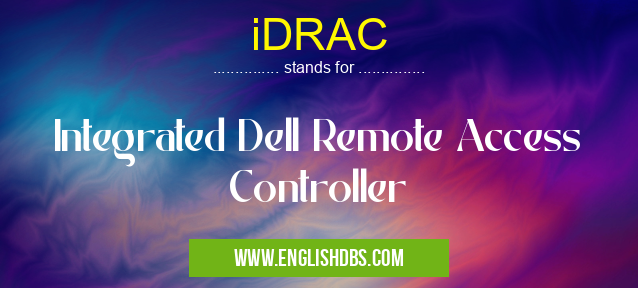What does IDRAC mean in HARDWARE
The Integrated Dell Remote Access Controller (iDRAC) is a technology used by Dell to provide efficient, streamlined access to its servers. It simplifies the process of configuring, monitoring and maintaining Dell servers. iDRAC enables users to remotely manage multiple systems at once, with the ability to customize their settings for their specific needs.

iDRAC meaning in Hardware in Computing
iDRAC mostly used in an acronym Hardware in Category Computing that means Integrated Dell Remote Access Controller
Shorthand: iDRAC,
Full Form: Integrated Dell Remote Access Controller
For more information of "Integrated Dell Remote Access Controller", see the section below.
Essential Questions and Answers on Integrated Dell Remote Access Controller in "COMPUTING»HARDWARE"
What is iDRAC?
iDRAC stands for Integrated Dell Remote Access Controller and is a technology used by Dell to provide efficient, streamlined access to its servers.
What are some features of iDRAC?
Some features of iDRAC include remote management of multiple systems simultaneously, customization of server settings, and monitoring and maintenance of the system from anywhere.
How does iDRAC simplify server access?
iDRAC simplifies server access by providing an easy user interface for configuring, monitoring, and maintaining Dell servers. This allows users to quickly adjust settings as needed without having to physically be present at the server's location.
Is there a cost associated with using iDRAC?
Generally speaking no, most models that come with an iDRAC port have it enabled by default. There may be an additional cost if you were looking to purchase additional services or high-end options such as dedicated NICs or encryption options.
Can I use iDRAC on non-Dell servers?
No, currently only Dell servers can use the Integrated Dell Remote Access Controller (iDRAC).
Final Words:
The Integrated Dell Remote Access Controller (iDRAC) is a powerful tool for quickly and easily managing multiple Dell servers from anywhere in the world. By providing an easy user interface for configuring, monitoring and maintaining these systems, it greatly simplifies the process of remotely managing these systems.
